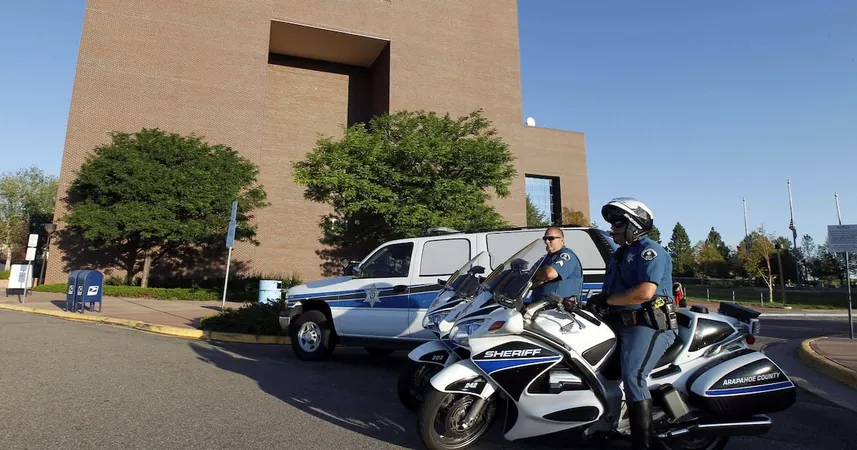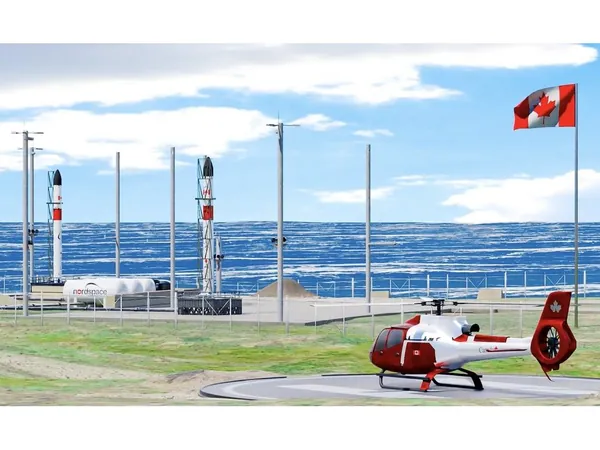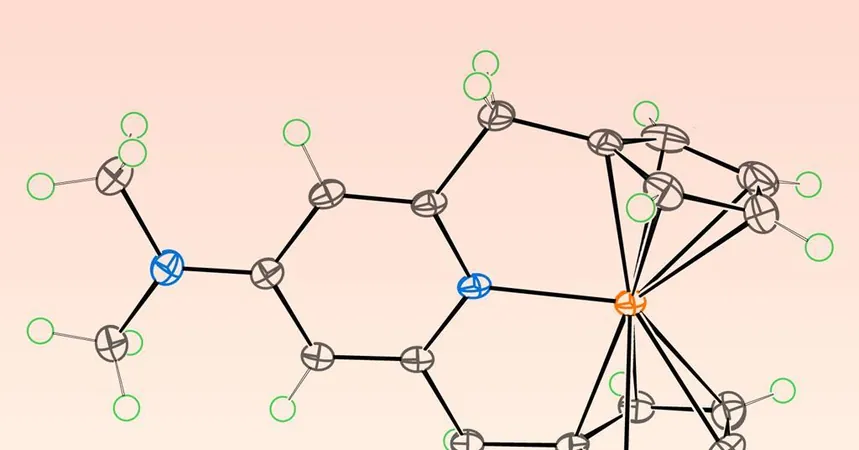
Meet MTG-S1: The Revolutionary Satellite Set to Transform Weather Forecasting!
2025-06-05
Author: Charlotte
A Game-Changer in Weather Prediction
From a staggering 36,000 kilometers above Earth, the Meteosat Third Generation Sounder satellite (MTG-S1) is gearing up to revolutionize how we forecast severe weather. Unlike traditional imaging satellites, MTG-S1 employs a cutting-edge Infrared Sounder that captures critical data on temperature, humidity, and trace gases, generating comprehensive three-dimensional maps of our atmosphere.
This transformative data collection will enhance our ability to detect and predict quickly changing and potentially hazardous weather patterns. Imagine receiving more accurate weather warnings, enabling communities to prepare for incoming storms, helping pilots avoid hidden turbulence, and improving strategies to tackle climate-related risks—ultimately saving lives and protecting property and infrastructure.
5 Ways MTG-S1 Will Revolutionize Weather Forecasting
1. Bringing Weather Forecasts into Three Dimensions
Historically, European weather satellites have depended on two-dimensional images to track cloud coverage and storm formations. While invaluable, these images only reveal what's happening at the surface level. MTG-S1's cutting-edge technology—imaging Fourier-Transform Spectrometry—measures infrared spectra in every pixel, allowing scientists to observe atmospheric conditions both vertically and horizontally.
"MTG-S1 shifts us from flat images to fully three-dimensional views of the atmosphere," says Tobias Guggenmoser, MTG-S Lead Payload Engineer at ESA. By capturing 1,700 infared channels every half an hour, forecasters can detect temperature, moisture, and trace gases at varying altitudes—understanding atmospheric dynamics like never before.
2. Accelerated Severe Weather Alerts
Nowcasting—forecasting on short timescales—will become more efficient with MTG-S1. With the ability to revisit Europe every 30 minutes and provide vertical profiles of temperature and moisture, meteorologists gain near-real-time updates on atmospheric conditions. For rapidly evolving events, such as thunderstorms and flash floods, this means quicker, more accurate warnings.
James Champion, ESA's MTG Project Manager, notes, "The vertical dynamics of the atmosphere are crucial for storm development. Being able to observe these details will enable scientists to identify storms right from their inception, giving more time for alerts."
3. Making Skies Safer for Air Travel
Turbulence remains a significant risk for air travel, often arising from invisible atmospheric phenomena. MTG-S1's vertical profiling capabilities will help meteorologists to pinpoint these hidden hazards, providing continuous updates on temperature, humidity, and wind conditions.
"Aviation will gain immensely from the satellite’s data," explains Champion. With better insights into turbulent regions, airlines and air traffic controllers can enhance flight safety and optimize flight paths.
4. Enhancing Environmental Monitoring
Since 1977, Meteosat satellites have been integral to gathering vast weather datasets. Now, with MTG-S1’s ability to measure greenhouse gases like carbon monoxide and methane, not only will we better forecast weather, but we’ll also create long-term records to track climate change.
Champions emphasizes that, "MTG-S1 will aid in developing policies that mitigate climate risks, essential as we face a rise in extreme weather events globally."
5. Pioneering Future Technology
MTG-S1 is setting new benchmarks with its advanced Infrared Sounder—one of the most sophisticated hyperspectral sounders designed for space. This complicated technology required unparalleled expertise and collaboration across various disciplines.
Guggenmoser sums it up, "This satellite not only showcases technological ambition but also prepares us for the next generations of weather satellites, ensuring we continue to push boundaries in atmospheric science."
Conclusion: A Bold Step Forward
On this World Environment Day, the launch of MTG-S1 symbolizes a major leap in our ability to observe and understand severe weather events, environmental changes, and air quality. With its groundbreaking data collection, MTG-S1 is poised to transform not just forecasting, but also our response to climate change challenges.









 Brasil (PT)
Brasil (PT)
 Canada (EN)
Canada (EN)
 Chile (ES)
Chile (ES)
 Česko (CS)
Česko (CS)
 대한민국 (KO)
대한민국 (KO)
 España (ES)
España (ES)
 France (FR)
France (FR)
 Hong Kong (EN)
Hong Kong (EN)
 Italia (IT)
Italia (IT)
 日本 (JA)
日本 (JA)
 Magyarország (HU)
Magyarország (HU)
 Norge (NO)
Norge (NO)
 Polska (PL)
Polska (PL)
 Schweiz (DE)
Schweiz (DE)
 Singapore (EN)
Singapore (EN)
 Sverige (SV)
Sverige (SV)
 Suomi (FI)
Suomi (FI)
 Türkiye (TR)
Türkiye (TR)
 الإمارات العربية المتحدة (AR)
الإمارات العربية المتحدة (AR)